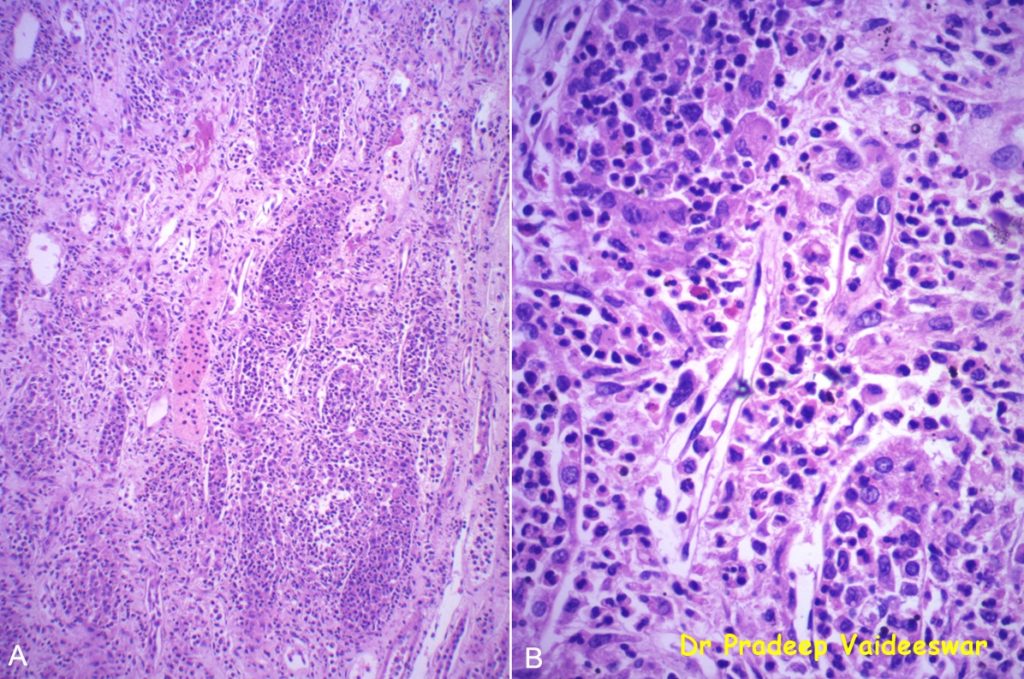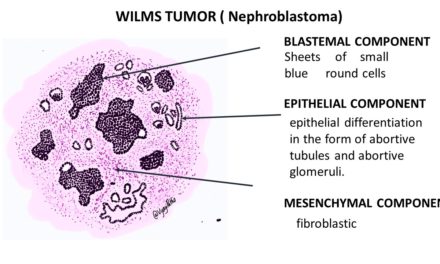Acute pyelonephritis
Acute pyelonephritis is defined as suppurative inflammation of kidney and renal pelvis
Caused by bacterial infection_ most commonly gram negative bacilli- E Coli.
Recurrent urinary infections are more common with Proteus, Klebsiella, Enterobacter, and Pseudomonas.
The bacteria reach the kidney most commonly by ascending infection, from the lower urinary tract. Instrumentation, Vesicouretric reflux are the predisposing factors
Hematogenous spread in the next common cause, in cases septicemia or infective endocarditis.
Morphology:
Gross: one or both kidneys are involved, which can be normal in size or enlarged. Tiny abscesses, which are raised yellowish lesions are apparent on the renal surface.
Microscopy:
Liquefactive necrosis and collections of neutrophils are seen in renal parenchyma
Numerous intratubular neutrophils are seen in the early stages which can extend into the adjacent interstitial tissue in the later stages.
The glomeruli are spared usually.
 Photo credit: Dr Pradeep Vaideeswar
Photo credit: Dr Pradeep Vaideeswar
Acute pyelonephritis: This is an example of ascending infection in which there is prominent expansion of collecting ducts in the medulla region. All the lumina are filled with neutrophils. The epithelial cells are barely discernible. The interstitum is also edematous and filled with neutrophils. ( A: H&E X 250, B: H&E X 400 )
Complications – Pyonephrosis: filling of pus in the renal pelvis and ureter due to obstruction.











Recent Comments